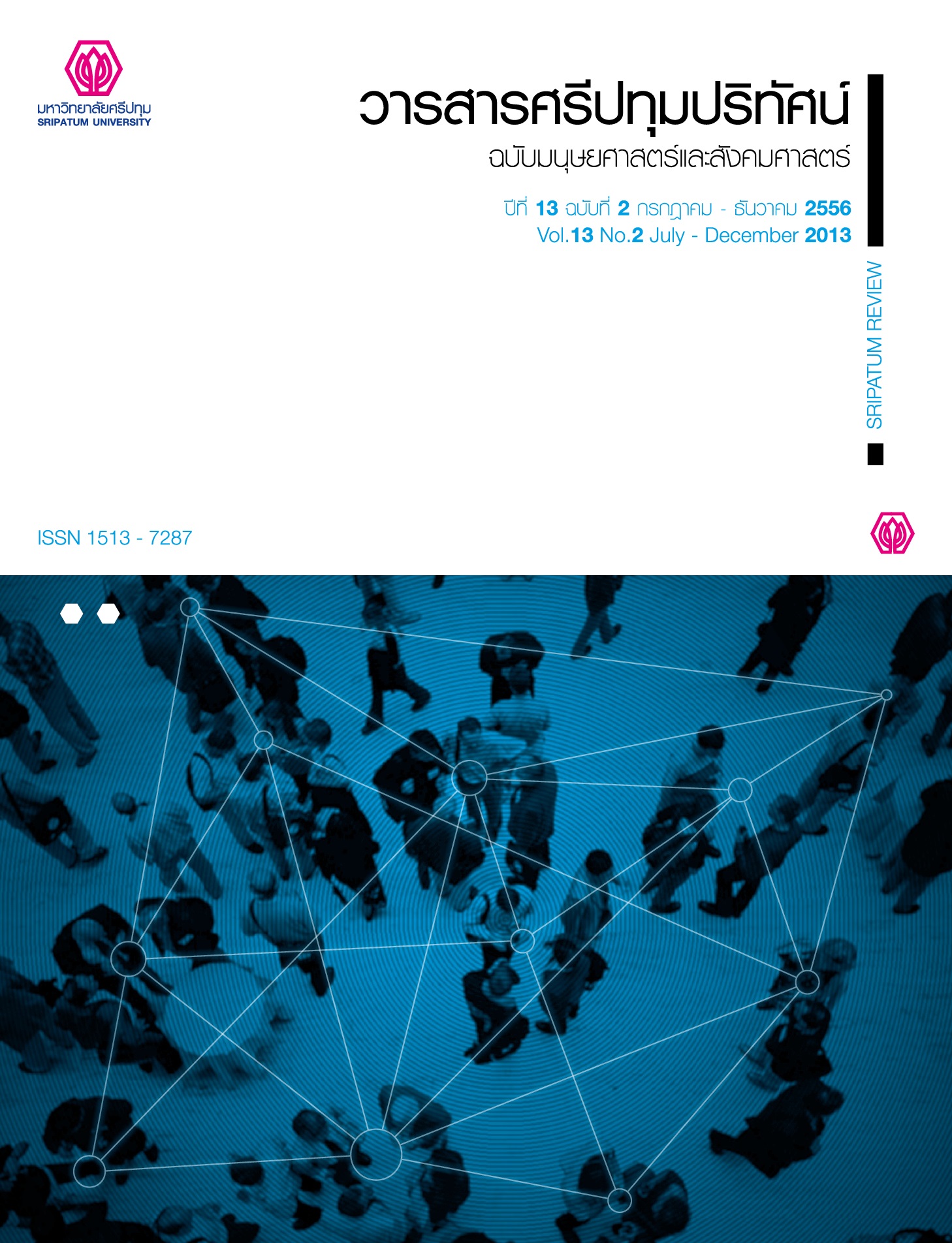ASEAN COMMUNITY: REGIONAL MONETARY INTEGRATION
Main Article Content
Abstract
Economic union or monetary union is a major step in the integration of international economies which allows free flows of product factors, goods and service among the member countries. It involves the coordination of economic policies or economic institutions such as using the same monetary policy, a central bank and a common currency to facilitate transactions among member countries. The required precondition approach of monetary union before adopting an optimum currency area includes free production factor mobility, high level of country openness, or similarity of inflation rates. In 2015, ASEAN community integration will enable free mobility of product factors, goods and service in accordance with the Optimum Currency Areas Theory. Therefore, in the future it is feasible for ASEAN to achieve monetary integration to become “ASEAN Union” in order to share the same monetary policy or common currency. However, this will probably not occur in the near future.
Article Details
1. กองบรรณาธิการสงวนสิทธิ์ในการพิจารณาและตัดสินการตีพิมพ์บทความในวารสาร
2. บทความทุกเรื่องจะได้รับการตรวจสอบทางวิชาการโดยผู้ทรงคุณวุฒิ แต่ข้อความและเนื้อหาในบทความที่ตีพิมพ์เป็นความรับผิดชอบของผู้เขียนแต่เพียงผู้เดียว มิใช่ความคิดเห็นและความรับผิดชอบของมหาวิทยาลัยศรีปทุม
3. การคัดลอกอ้างอิงต้องดำเนินการตามการปฏิบัติในหมู่นักวิชาการโดยทั่วไป และสอดคล้องกับกฎหมายที่เกี่ยวข้อง
References
กรมเจรจาการค้าระหว่างประเทศ. (2553). กรอบความร่วมมืออาเซียน+3, 20 ตุลาคม 2555.
Alesina, A., Barro, R. J., & Tenreyro, S. (2002). Optimal currency areas. National bureau of economic research, 17.
ASEAN. (2008). ASEAN economic community blueprint, Retrieved Octorber 28, 2012.
Bacha, O. I. (2008). A common currency area for ASEAN? Issues and feasibility. Applied Economics, 40, 515-529.
Bacha, O. I. (2008). A common currency area for MENA countries? A VAR analysis of viability. International Journal of Emerging Markets, 3(2), 197-215.
Benbouziane, M., & Benamar, A. (2010). Could GCC countries achieve an optimal currency area?Middle East Development Journal, 2(02), 203-227.
Buigut, S. K., & Valev, N. T. (2005). Is the proposed East African monetary union an optimal currency area? A structural vector autoregression analysis. World Development, 33(12), 2119-2133.
Chuku, C. A. (2012). The proposed ECO: Should West Africa proceed with a common currency? Conference on Economic Development in Africa, March 2012, Oxford University.
Horvath, J. (2003). Optimum currency area theory: A selective review. Bank of Finland Institute fo Economies in Transition. Discussion paper, (15).
Hsu, H. F. (2010). Is a common currency area feasible for East Asia? A multivariate structural vector autoregression approach. Asian Economic Journal, 24(4), 391-411.
Jean Louis, R., Brown, R., & Balli, F. (2011). On the feasibility of monetary union: Does it make sense to look for shocks symmetry across countries when none of the countries constitutes an optimum currency area? Economic Modelling, 28(6), 2701-2718.
Kandil, E, K., & Mohamed, T. (2010). Is the announced monetary union in GCC countries feasible? Retrieved October 15, 2012.
Kenen, P. (1969). The theory of optimum currency areas. Monetary Problems in the International Economy. Chicago: University of Chicago Press.
Lee, G. H. Y., & Azali, M. (2012). Is East Asia an optimum currency area? Economic Modelling, 29(2), 87-95.
McKinnon, R. I. (1963). Optimum currency areas. American Economic Review, 53,717-725.
Mundell, R. A. (1961). A theory of optimum currency areas. American Economic Review,51,657-665.
Sun, W., & An, L. (2008). Asymmetric shocks and exchange rate regimes in East Asia. InternationalResearch Journal of Finance and Economics, 22,38-48.


